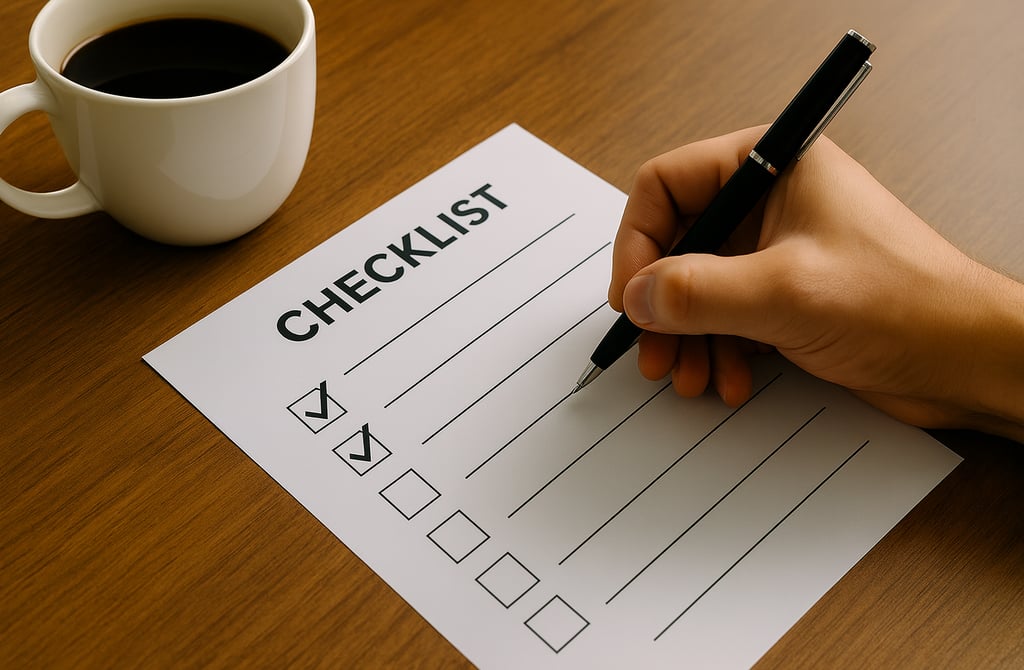How to Buy B2B Leads: The Smart Buyer’s Checklist
A practical, step-by-step checklist for buyers who want to purchase B2B leads the right way. Covers what to look for, red flags, how to verify data quality, and how smart buyers avoid low-quality databases when sourcing leads in 2026.
B2B LEADSLEAD BUYING GUIDELEAD QUALITY AND VERIFICATIONDATA & OUTREACH
CapLeads Team
11/16/20253 min read


How to Buy B2B Leads: The Smart Buyer’s Checklist
Buying B2B leads can either grow your pipeline fast or destroy your outreach before it even starts. The difference is simple. Smart buyers know what to check before paying. Bad buyers skip the due diligence and get burned.
Here is the punchiest, most practical checklist you will ever use when buying B2B leads in 2026.
1. Check the Source
Where do the leads come from?
A serious provider will tell you.
A shady provider will avoid the question.
Look for:
• verified datasets
• clean sourcing
• proof of real validation
• no generic scraped lists
2. Check the Accuracy Rate
If the provider cannot state their accuracy rate, walk away.
Accuracy is the entire game.
Minimum standard in 2026:
95 percent accuracy or higher.
Anything below that is a bounce-rate disaster waiting to happen.
3. Check the Decision-Maker Coverage
You do not want junior roles.
You do not want interns.
You do not want assistants.
Your list must contain:
• Founders
• CEOs
• Directors
• Heads of Departments
• Senior Managers
Decision-makers only. Everything else wastes your time.
4. Check for Accept-All Filters
The fastest way to ruin a cold email campaign is to buy lists full of accept-all emails.
Smart buyers always ask:
“Do you remove accept-alls from the final delivery?”
If the answer is anything but “yes,” leave immediately.
5. Check the Industry Match
Generic lists are cheap for a reason.
Niche lists convert better.
Your leads must match:
• your target industry
• your offer
• your messaging
• your ICP
If the datasets are random, the results will be random.
6. Check the Data Freshness
Old data destroys deliverability.
Ask how often the list is refreshed.
Monthly or quarterly refresh is the standard.
Anything older is a risk.
7. Check Pricing Logic
Good data is not expensive.
Bad data is.
Smart buyers know what they are paying for.
Look for pricing that:
• reflects accuracy
• reflects niche value
• reflects decision-maker depth
Cheap data usually costs more in the end.
8. Check Delivery Time
If a provider takes forever to deliver, it usually means:
• they have no inventory
• they scrape on demand
• they do not validate properly
Twenty-four hour delivery is ideal.
9. Check the Guarantee
Reliable data providers offer a clear guarantee.
A simple rule:
If they do not stand behind their data, you should not buy it.
Look for:
• money back guarantee
• bounce protection
• replacement policy
Smart buyers always protect themselves.
10. Check the Customer Support
If something goes wrong, who helps you?
You need fast support, not ticket black holes.
Real providers respond quickly.
Cheap ones disappear once the invoice is paid.
Final Thought
Buying B2B leads should not be a gamble. It should be a process. And when you follow this checklist, you avoid the biggest traps and choose providers who actually care about accuracy and performance.
If you want a shortcut, CapLeads checks every box on this list.
Verified data. Decision-makers only. No accept-alls.
Delivered in twenty-four hours.
Related Posts
The Data Ethics Problem No One in B2B Wants to Talk About
CapLeads Expands to 55 Industries — Setting a New Standard in Verified B2B Data
Who Benefits Most from Verified Building Products Company Leads (and Why)
Unlocking Opportunities: Verified Leads for Machinery Companies
Discover New Opportunities with Verified Commercial Products Company Leads
How to Vet a Lead Provider Before You Buy: A Founder's Checklist
Why We Stopped Talking About Validation and Started Talking About Revenue
Data Fatigue Is Real - Here's How Smart Founders Beat It
The Real Story Behind CapLeads' .15-Cent-Per-Lead Promise
Why Cold Email Outreach Will Still Outperform Ads in 2026?
Why You Should Buy Your B2B Leads from CapLeads (and Not Just Any Provider)
Behind the Inbox: What We Learned from 30,000 Cold Email Replies
Why Investors Are Quietly Betting on Data Aggregators, Not Agencies
How to Turn a 97% Deliverability Rate Into Actual Sales Conversations
Top B2B Industry Datasets We Offer (And the Industries We Don’t Support)
How to Use Verified Data to Train Your AI Prospecting Tools for Better B2B Outreach
What Is DFY Email Outreach? A Complete Breakdown
Industry-Specific B2B Leads: Why They Convert Better Than Generic Databases
Connect
Get verified leads that drive real results for your business today.
www.capleads.org
© 2025. All rights reserved.
Serving clients worldwide.
CapLeads provides verified B2B datasets with accurate contacts and direct phone numbers. Our data helps startups and sales teams reach C-level executives in FinTech, SaaS, Consulting, and other industries.
